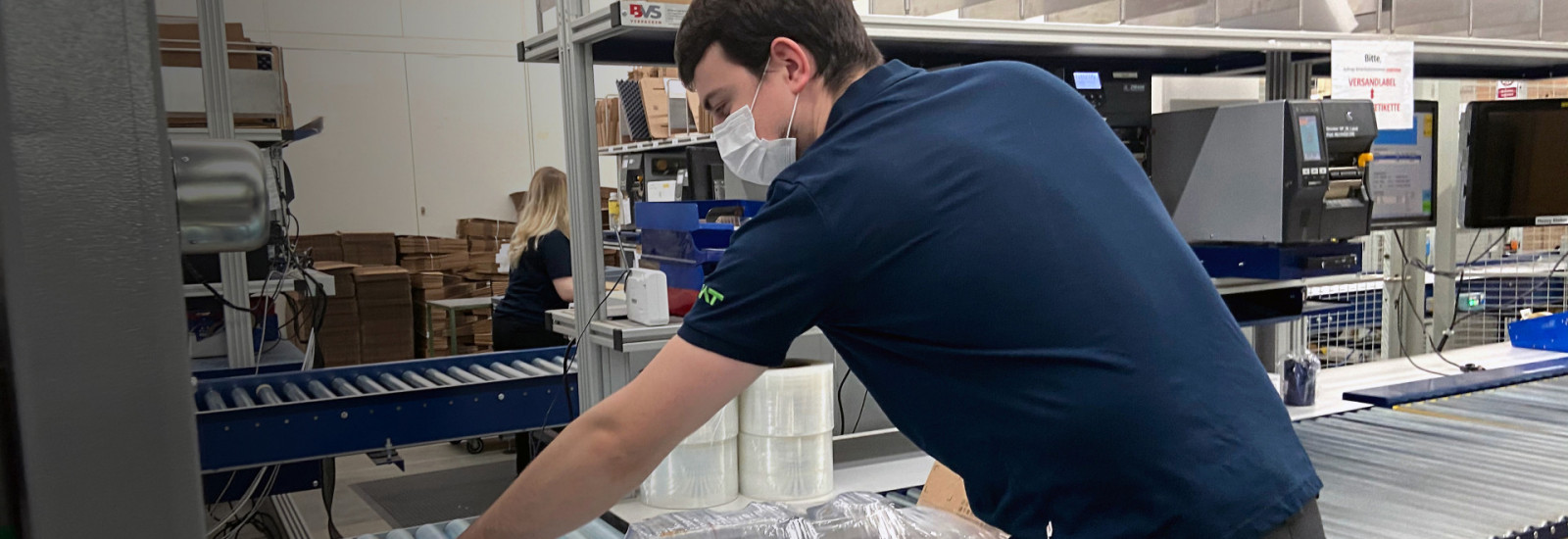“Like all companies, the VAT Logistics team looks to provide both robust packaging that effectively protects valuable components during shipping, and controlling costs,” explains Twan Steenweg Global Head of Logistics at VAT.
However, widespread usage of single-use packaging containers – especially multi-material packaging formats – complicate recycling efforts and can create a heavy burden on the environment. Today, corporate logistics departments are striving to better manage packaging waste by reducing the range of packaging materials to facilitate recycling.
Packaging materials used at VAT are used mainly for shipping vacuum valves and spare parts – anywhere in the world. The logistics guidelines for all VAT facilities define how each product type (and each valve model) is to be packaged, how it goes in the box, and what the packaging material is made of.
Reducing use of foam
The main goal of the recently implemented ‘VAT Packaging Concept’ was to reduce the use of foam packaging materials as far as possible: “As a type of plastic, foam materials cannot be recycled. They ultimately take up a lot of volume in the packaging waste stream,” adds Twan Steenweg.
As a result, the new packaging guidelines and processes have brought about a noticeable decrease in the amount of packaging materials used for shipments to clients. Most notably, the volume of foam products has been substantially reduced. Previously, Logistics needed up to six truckloads of foam packaging materials every week. Today, only a single truckload is used – every two weeks. VAT also designed and introduced a system of shipping ‘trays.’ These trays can be shuffled back and forth numerous times between suppliers and VAT – further reducing the need to dispose of or recycle any packaging materials.
Recyclable materials a priority
Where once only about 22% of the packaging materials used by VAT Logistics were recyclable, today that share is much higher. For example, cardboard, which is completely recyclable, now makes up 75% of the packaging materials used at VAT. Currently, the mix of packaging materials include cardboard (75%), wood (10%), and reinforced pressed cardboard (10%), and foam (5%).
Using sustainable materials is one side of the packaging issue. Because all VAT product packaging is single use (i.e., one-way), another key aspect is making it easier for clients to recycle the packaging they receive from VAT. Because most clients – including the high-tech industry and ‘Big Science’ research institutes – are members of the “Global Industry Recycling Forum,” the Logistics team follows the Forum’s guidelines to help simplify the recycle process.
Looking at design too
“Design is another key aspect of shipping because reducing volume and maintaining safe packaging are often conflicting goals in logistics. Eliminating the empty space inside packaging containers remains a sizeable challenge, because that space is often useful as a protective buffer for the contents,” notes Twan Steenweg.
An added bonus is cost; moving to more sustainable packaging has turned out to be cost-neutral for VAT. Thanks to careful management of packaging guidelines, costs for sustainable materials are kept below previous levels. Twan Steenweg adds: “Ultimately, the efforts of our Logistics teams are to reduce the company's carbon footprint without increasing costs.”
Alert to new technologies
To stay ahead of packaging trends, Steenweg’s team constantly monitors packaging innovations from around the world. Relevant innovations and new materials are evaluated and tested by in-house engineers. Often, new materials and designs are certified for durability and strength by independent labs. Finally, VAT Logistics evaluates each proposal for new packaging materials/methods. If accepted, it is then implemented around the world.
“Similar to our R&D and product development teams, VAT Logistics works closely with material suppliers, our clients and manufacturing to ensure that our innovations are reliable and cost-effective,” summarizes Twan Steenweg. “We continue to work on the complete elimination of all non-recyclable materials at VAT.
